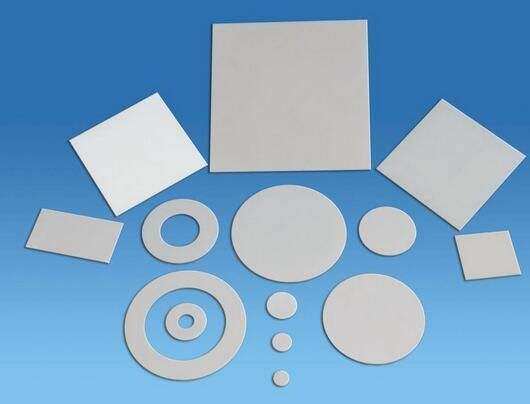1. Aluminum nitride insulating porcelain
The commonly used additives in aluminum nitride ceramics include Y2O3, CaO, etc., aluminum nitride materials containing CaO, low sintering temperature, the thermal conductivity is about 100W/(m·k). In the production process, it is of great significance to optimize the microstructure of polycrystalline al nitride ceramics. The thermal conductivity of aluminum nitride ceramics containing calcium oxide is up to 219W/(m·k). and Y2O3 can be added to improve the thermal conductivity, heat resistance and mechanical strength after heat treatment in a non-oxidizing atmosphere.
Metallization is often involved in the surface of ceramics as packaging or substrate materials.Although aluminum nitride and tungsten have good thermal expansion matching, it is difficult to establish an ideal bonding mechanism due to the absence of any reaction between the them.
Adding flux substances into tungsten powder, such as CaO, can improve the metallization performance. The main function of flux substances is to form aluminate substances with Al2O3 on the surface of aluminum nitride, and can migrate along the AIN grain boundary, strengthening the binding strength between AIN and tungsten powder.
The integration of circuit substrates can improve the degree of integrated circuit.

Aluminum nitride ceramic substrate
2. BN insulating porcelain
Boron nitride (BN) has good thermal conductivity, and the thermal conductivity of cubic BN single crystal is estimated as high as 1300W/ (m·K) theoretically. Hexagonal (graphite) and tripartite BN have layered structure.
Hexagonal (graphite) BN has the advantages of good thermal conductivity, mechanical processing property, high frequency dielectric property, non-toxicity, small change of thermal conductivity with temperature, etc., and is one of the insulating ceramic materials worth developing vigorously.
In recent years, in order to improve the heat dissipation of integrated circuit substrates, on the one hand, the thermal conductivity is 9 times higher than that of alumina, which is toxic and oxidized. (BeO) material is used as a substrate for high-power integrated circuits; on the other hand, SiC is used as a substrate. Adding BeO to SiC can make the grain boundary insulating, so that the SiC material becomes an insulator, and it also improves heat resistance and strength.






